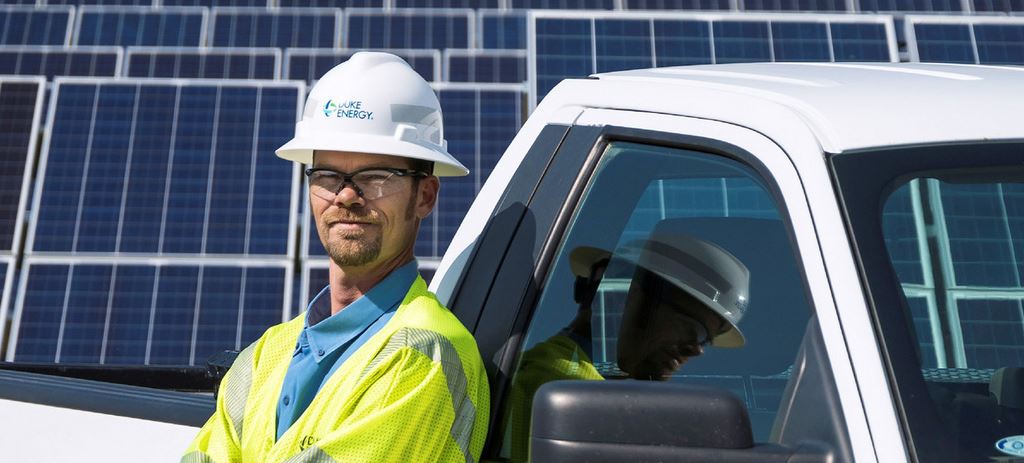Duke Energy plans to have 23% of its electrical output come from renewable sources by 2030, according to the company’s newly-released sustainability report.
Renewables currently make up about 8% of Duke’s electrical output, natural gas accounts for 42%, coal for 33%, and nuclear for 17%. By 2030, Duke plans for its generation mix to include 30% nuclear, 38% natural gas, and 9% coal.
New renewable resources will be developed to replace the generation lost by the 1,922 MW of coal capacity the utility plans to retire by the end of 2025. While Duke will have retired more than 8,400 MW of coal in total by 2025, that only represents about a third of the utility’s coal fleet; some plants are scheduled to stay active until 2048.
According to Duke, the company plans to retire all coal-only units by 2030 in the Carolinas and shorten average retirement dates by 40% in Indiana.
On the emissions front, Duke said that it has reduced its carbon dioxide output by more than 40% since 2005. The company aims to reduce its carbon emissions by at least 50% by 2030, achieve net-zero methane emissions from its natural gas distribution businesses by 2030, and net-zero emissions from electricity generation by 2050.
In pursuit of this net-zero goal, Duke highlighted a few technologies that it said will be critical.
One is energy storage and the sustainability report states that Duke plans to add 375 MW of energy storage across its businesses over the next five years. The commitment is not limited to battery energy storage, as Duke said it recognizes the role that pumped hydro storage will play in its energy transition. For example, the company plans to increase capacity at its Bad Creek pumped hydro facility in South Carolina by 280 MW through unit upgrades.
A second emerging technology that Duke recognized in its sustainability report is green hydrogen. Duke said it is partnering with Siemens Energy and Clemson University to study the use of hydrogen for energy storage and as a low- or no-carbon fuel source to produce energy at the company’s combined heat and power plant in South Carolina.
The study will include research on hydrogen production, storage, co-firing with natural gas, and multiple forms of hydrogen production, such as electrolysis, which produces hydrogen from water and has no byproducts.
This content is protected by copyright and may not be reused. If you want to cooperate with us and would like to reuse some of our content, please contact: editors@pv-magazine.com.









I am curious how Duke is going to go from 17% nuclear today to 30% nuclear in 9.5 years. Are they going to buy someone else’s nuclear plants? Surely they aren’t going to build approximately 8GW of nuclear in the next decade.
And adding another 15% of RE in the next 10 years is a complete joke.
I really hope we get a carbon tax in the next 5 years and they aren’t allowed to pass it to their customers.
As coal plants retire and existing nuclear capacity remains in service, the share of nuclear capacity in the utility’s overall mix will rise.